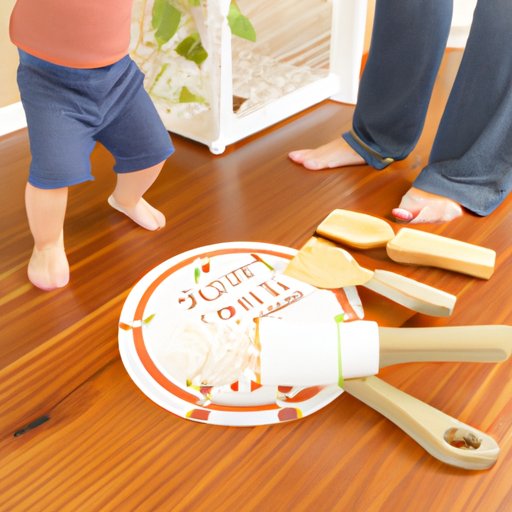
Introduction
Disciplining a 2-year-old can be challenging for parents, but it is a crucial part of parenting. Toddlers are curious and exploring the world around them, which can often lead to misbehavior. As a parent, it is essential to establish an effective discipline strategy to ensure your child develops positive behavior and values in the future. In this article, we’ll explore how to discipline a 2-year-old effectively.
Establish a Consistent Routine
Consistency is key when it comes to disciplining a 2-year-old. Toddlers thrive on routine, and establishing a consistent one can help reduce the need for discipline. Creating a routine around meals, bath time, and nap time can help set expectations for your child’s behavior.
It’s important to provide predictability and structure to your child’s day, which can help your child know what is expected of them. Make sure to stick to a consistent schedule, even on weekends, and communicate expectations with your child to help eliminate confusion.
Be Clear and Firm
Clarity is crucial when it comes to disciplining a 2-year-old. It’s essential to explain why certain behaviors are not allowed and set clear consequences for disobedience. Speak in simple, age-appropriate language and avoid using long explanations.
It’s essential to be firm but avoid yelling or aggressive behavior. Toddlers respond better to a calm but assertive tone. Remember to remain consistent in your use of language and consequences for the desired behavior.
Set Boundaries
Setting boundaries is essential to help your child understand what behaviors are acceptable. Communicating expectations and limits to your child can help prevent misbehavior. Creating a safe and secure environment where your child feels respected and valued is essential.
Set clear boundaries for your child, such as no hitting or biting, and make sure to explain why certain behaviors are not allowed. When your child misbehaves, provide a warning if it’s a first-time offense. If your child continues to push boundaries, it’s time to enforce the consequences you’ve established.
Redirect Their Attention
Toddlers have a short attention span, and it’s important to redirect their attention to appropriate activities. When your child is misbehaving, engage them in something else that is more acceptable. For instance, if your child is throwing toys, give them a new activity, such as coloring or reading a book.
Redirecting your child’s attention can help avoid negative behavior and help your child develop a positive attitude towards appropriate activities. Focus on providing engaging and enjoyable activities that your child will enjoy, and remember to praise them for good behavior.
Use Positive Reinforcement
Using positive reinforcement can help encourage positive behavior in your child. Praising good behavior can help your child feel appreciated and valued, which can lead to a positive attitude towards desirable behavior.
Remember to praise your child for good behavior specifically. For instance, if your child shares a toy, praise them for being kind and sharing. Positive reinforcement can help your child develop a sense of pride and self-worth while reinforcing the behavior you desire from them.
Time-Out
Time-out is a helpful tool when your child’s behavior becomes unacceptable. The idea behind time-out is to remove your child from the environment and provide them with a chance to calm down and reset their behavior.
When placing your child in time-out, make sure to explain why it’s happening calmly. Choose a designated area free of stimulation, such as a corner, chair, or playpen, and make sure your child stays there for an appropriate amount of time based on their age (2 minutes per year of age).
After the time-out session is over, provide your child with an opportunity to discuss why their behavior was unacceptable. Remember to provide praise for good behavior afterward to encourage continuation of the desired behavior.
Don’t Punish Out of Anger
Disciplining a 2-year-old can be frustrating, and it’s important not to punish out of anger. Responding to your child’s negative behavior through yelling or aggressive behavior can cause them to be fearful and emotionally distant.
It’s essential to model appropriate behavior by remaining calm and maintaining composure. Remember to take a deep breath and count to ten before responding. Being calm can help reduce negative emotions and prevent inappropriate behavior.
Conclusion
Disciplining a 2-year-old requires patience and consistency. Establishing a consistent routine, setting clear boundaries, redirecting their attention, and using positive reinforcement can help develop good discipline practices. Remember to avoid punishing out of anger and take time to model appropriate behaviors. If you’re struggling, don’t hesitate to ask for help. Parenting classes and books can provide additional support and guidance.





